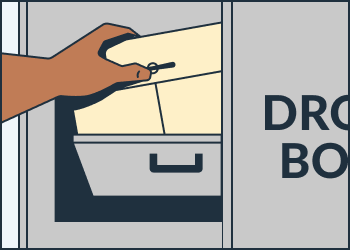Before you start
Anything you put in your papers could be used against you in a criminal case. Talk to a lawyer if you have any concerns.
-
Get free, in-person help from the court. Learn more about your local court’s Self-Help Center.
-
Hire a lawyer to help you with all or a part of your case. It’s possible to go through this process without a lawyer. But having a restraining order against you may have a lot of consequences, and you may want to hire a lawyer to give you advice or represent you at your court hearing.
How to agree (consent) to a restraining order
-
Fill out the Consent form (GV-125)
- Fill out Consent to Gun Violence Restraining Order and Surrender of Firearms (form GV-125)
Agreeing to a restraining order means that you give up the right to own, have, or buy firearms (guns), firearm parts, ammunition, or magazines. The restraining order will be listed in the statewide California Restraining and Protective Order System, where it will be accessible to all law enforcement. The restraining order may last up to five years, and the person who asked for the restraining order will be able to ask for the restraining order to be renewed. If you were arrested recently, are on probation, have a criminal case open, or have concerns about the effect of agreeing to a restraining order, you should talk to your criminal lawyer before you put anything in writing. If you don't have a lawyer, you can go to a Self-Help Center to learn more about your options. -
Make copies of your form
After you’ve filled out and signed the Consent form (form GV-125), make 2 copies. You'll need the 2 copies, plus the original, when you file with the court.
-
File your forms
Take your form and copies to the courthouse listed on the papers you were served.
At the courthouse, you’ll file the forms by giving the original and two copies to the clerk. The clerk will keep the original, stamp your copies, and return the copies to you. One copy is for your records. The other copy is for the other side.
There is no fee to file the Consent form.

Some courts have a drop box that you can use. If you use a drop box include the original and 2 copies to the clerk. After you drop your papers, you will have to go to the courthouse to pick up the copies. If your court hearing is only a few days away, do not use a drop box. Take your papers to the court clerk to file. Some courts allow online filing, also called efiling. You can find out if your court has online filing by visiting your court’s website.
-
Serve your Consent form by mail
Serving means another adult, not you, mails a copy of your Consent form (form GV-125) to the other side. Your server can be someone you know or a professional process server you hire. When choosing your server, find someone who is both:
-
18 years old or over
-
Not part of your case
Using regular first class mail, your server mails the GV-125 to the other side, or if the other side has a lawyer, to their lawyer. Tell your server to write down the date they mailed the papers. Have your server complete form GV-250. It helps if you fill in the top part of the form with the case and court information. Your server can then fill in the information about how, when, and where they mailed the papers. Your server must sign and date the form.
-
Make a copy of form GV-250.
-
File the original and copy at the courthouse where you filed your Consent form. The court will stamp and give you your copy back.
-
-
Check the restraining order you get in the mail and obey the orders
The court clerk will fill out the Gun Violence Restraining Order After Hearing or Consent to Gun Violence Restraining Order (form GV-130) and mail a copy to you and the other side. Read the form very carefully and obey the orders listed.
What's next?
If you agree to the restraining order, you must follow certain steps. If you have or own any firearms (guns), firearm parts, ammunition, or magazines, you must surrender or sell them. If you don't own any prohibited items, you cannot get or buy any until the orders against you end.

